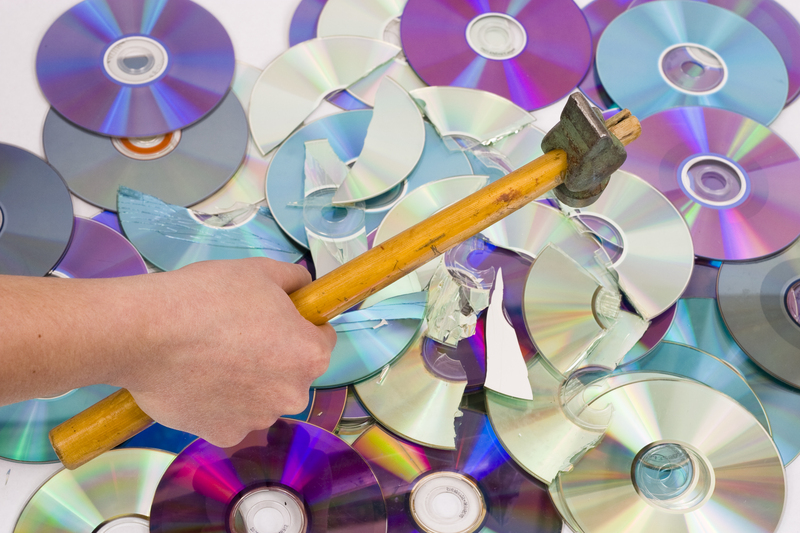Step-by-Step Guide to Disposing of PPE Waste Responsibly
The use of personal protective equipment (PPE) such as face masks, gloves, gowns, and face shields has surged globally due to the COVID-19 pandemic and various occupational safety requirements. While PPE helps keep us safe, improper disposal of PPE waste is causing significant environmental harm. In this comprehensive guide, we provide a step-by-step approach to dispose of PPE waste responsibly so you can help protect both public health and the planet.
Why Responsible PPE Waste Disposal Matters
Incorrectly discarded masks and gloves not only pose risks to sanitation workers and the public but also contribute massively to plastic pollution. Billions of single-use PPE items are entering landfills, oceans, rivers, and even urban streets daily. These materials can persist in the environment for hundreds of years and adversely impact wildlife and ecosystems. Learning proper PPE disposal techniques is crucial for minimizing public safety risks and environmental damage.
Environmental Impact of PPE Waste
- Plastic Pollution: Most PPE is made from non-biodegradable plastics such as polypropylene and vinyl.
- Wildlife Threats: Animals can become entangled in masks or ingest gloves, resulting in harm or death.
- Microplastics: When PPE breaks down, it forms microplastics, contaminating soil and waterways.

Common Types of PPE Waste
Before disposal, it's vital to identify the types of PPE waste you generate. Proper segregation ensures correct treatment and disposal methods.
- Disposable Face Masks (surgical, N95, cloth with filters)
- Disposable Gloves (latex, nitrile, vinyl, plastic)
- Gowns and Aprons (used in healthcare, labs)
- Face Shields & Goggles
- Shoe Covers and Hair Nets
Step 1: Preparation for PPE Waste Disposal
- Wash Your Hands: Before and after handling used PPE, wash your hands with soap and water for at least 20 seconds.
- Wear New Gloves: When collecting and sorting PPE waste, use fresh gloves to prevent contamination.
- Separate PPE from Regular Trash: Designate a specific bin or bag for PPE items.
PPE Waste Collection Points
- At Home: Store PPE waste in a lined, hands-free, covered bin if possible.
- At Work: Set up clearly labeled bins for PPE waste in all relevant areas.
- In Public Spaces: Use designated PPE disposal bins provided by local authorities.
Step 2: Segregation of PPE Waste
Correctly segregating PPE waste minimizes contamination and ensures proper handling by waste management workers.
- Unused/Expired PPE: If the items are expired but unused, check if they can be donated to non-clinical organizations or sent for recycling.
- Potentially Infectious PPE: Any PPE used in healthcare settings, for caring for sick individuals, or in public places should be considered potentially infected and needs special treatment.
- General PPE Waste: Used for personal, non-medical reasons and not visibly soiled.
Using Colored Bags for PPE Segregation
- Red Bags: For biohazardous waste (from hospitals or homes with ill individuals).
- Yellow Bags: For clinical waste such as gloves, aprons, masks from healthcare environments.
- Black Bags: For general household or non-contaminated PPE waste.
Step 3: How to Dispose of PPE Waste Safely at Home
- Don't Recycle Used PPE: Masks, gloves, and contaminated PPE cannot be recycled with household recyclables. Place them in a separate garbage bag.
- Bag PPE Waste Securely: Double bag PPE waste to prevent leakage or spillage.
- Seal Bags Tightly: Use ties or knots to ensure the bags are sealed tightly.
- Label if Necessary: If you're caring for a sick person at home, label the bag "potentially infectious" for the safety of sanitation workers.
- Use Designated Collection Days: If local authorities have special PPE waste collection days, hold onto the bags until then.
- Place PPE Waste in General Waste Bin: Put the sealed bag in your non-recyclable/general waste bin--not the recycling bin.
Important Safety Tips
- Do not flush masks or gloves down the toilet! This can clog systems and pollute waterways.
- Do not burn PPE waste at home. Burning can release toxic chemicals.
Step 4: Workplace PPE Waste Management
Responsible PPE waste disposal at work is essential to protect all employees, visitors, and cleaning staff. Organizations must implement proper waste management strategies.
- Install clearly marked bins for PPE waste.
- Provide staff training on safe removal, disposal, and hand hygiene protocols.
- Monitor and empty bins regularly to prevent overflows.
- Ensure cleaning staff wear appropriate PPE while handling waste.
- Collaborate with licensed waste collection companies for medical or contaminated PPE.
Medical and Laboratory Waste
PPE waste from healthcare facilities and laboratories must be disposed of as medical waste, following national or local biohazard regulations. These typically involve:
- Specialized collection and incineration facilities
- Autoclaving or chemical treatment before final disposal
- Strict record keeping for waste volumes
Step 5: Specialized Services and Community Initiatives
Certain manufacturers and waste firms now offer PPE recycling and collection programs. These are ideal for organizations or communities generating large volumes of PPE waste.
- PPE Recycling Programs: Some companies accept used masks and gloves for processing into new plastic products (note: not all areas offer this yet).
- Mail-Back Collection Kits: Designed for offices, clinics, and schools to return PPE waste by mail for proper disposal.
- Public Collection Points: Special bins at supermarkets, pharmacies, or community centers for responsible PPE waste disposal.
- Educational Drives: Community campaigns to educate residents on correct PPE waste practices.
How Does PPE Recycling Work?
Some companies (like TerraCycle) have developed ways to clean and shred PPE waste, which is then melted and reformed into durable plastic products such as benches or playground equipment. However, heavily contaminated PPE from healthcare should not be recycled and must be incinerated or otherwise neutralized.
Step 6: Environmental Alternatives to Single-Use PPE
While correct PPE disposal is vital, preventing unnecessary PPE waste is even better. Consider eco-friendly options:
- Reusable Masks: Use well-fitting washable masks for non-clinical settings. Wash after use.
- Biodegradable PPE: Some manufacturers now produce compostable masks and gloves made from plant-based fibers.
- Minimize PPE Where Safe: Only use single-use PPE when absolutely necessary.
- Bulk Purchasing: Reduces packaging waste.
Proper Cleaning of Reusable PPE
- Wash cloth masks in hot water with detergent after every use.
- Disinfect reusable face shields and goggles as per manufacturer instructions.
Complying with Local Regulations for PPE Disposal
Regulations for disposing of PPE waste responsibly differ between countries, states, and even cities. It's crucial to follow official guidance for your region.
- Check with your local waste management authority about special PPE disposal instructions.
- Follow healthcare and workplace PPE waste protocols if you're a manager or safety officer.
- Inquire about community drop-off or collection events for PPE waste.
The Role of Individuals and Businesses in Responsible PPE Waste Disposal
Both individuals and organizations play a crucial role in minimizing the environmental impact of PPE waste.
- Individuals: Educate family and friends, never litter PPE, and advocate for local recycling or take-back programs.
- Businesses: Integrate responsible PPE waste management into workplace safety policies and corporate social responsibility plans.
Education: Key to Reducing PPE Pollution
Raising awareness about the hazards of improper PPE disposal fosters community engagement and drives lasting behavioral change. Share information through posters, social media, and workshops to encourage responsible PPE practices.

FAQs on PPE Waste Disposal
-
Can I recycle my used masks and gloves in household recycling?
No. Most recycling programs do not accept contaminated PPE due to health and technical limitations. -
What should I do with masks used while caring for someone sick?
Double-bag and label them as "potentially infectious" before disposing into household trash, following local rules. -
Are there alternatives to single-use PPE?
Yes, use washable cloth masks and explore biodegradable options for low-risk scenarios. -
Is burning PPE waste a safe disposal method?
No. Home incineration can release harmful toxins. Use municipal or medical waste disposal services instead.
Conclusion: Your Responsibility in Tackling PPE Waste
The world is facing a mounting PPE waste crisis with serious threats to the environment and public health. By following this step-by-step guide to responsible PPE waste disposal, you protect your community, sanitation workers, and the earth. Choose eco-friendly PPE, educate others, and always follow local disposal regulations. Small individual actions, multiplied globally, can make an enormous difference in the fight against PPE pollution.
Every step towards better PPE waste management counts. Dispose smartly, encourage others, and contribute to a cleaner, safer future!